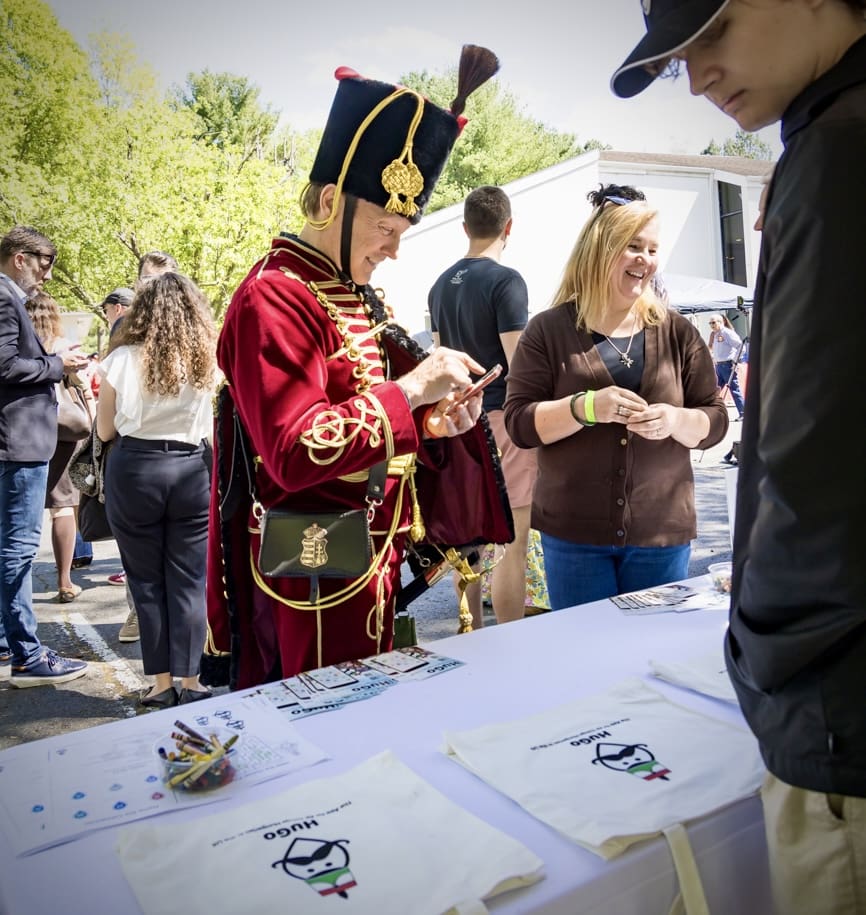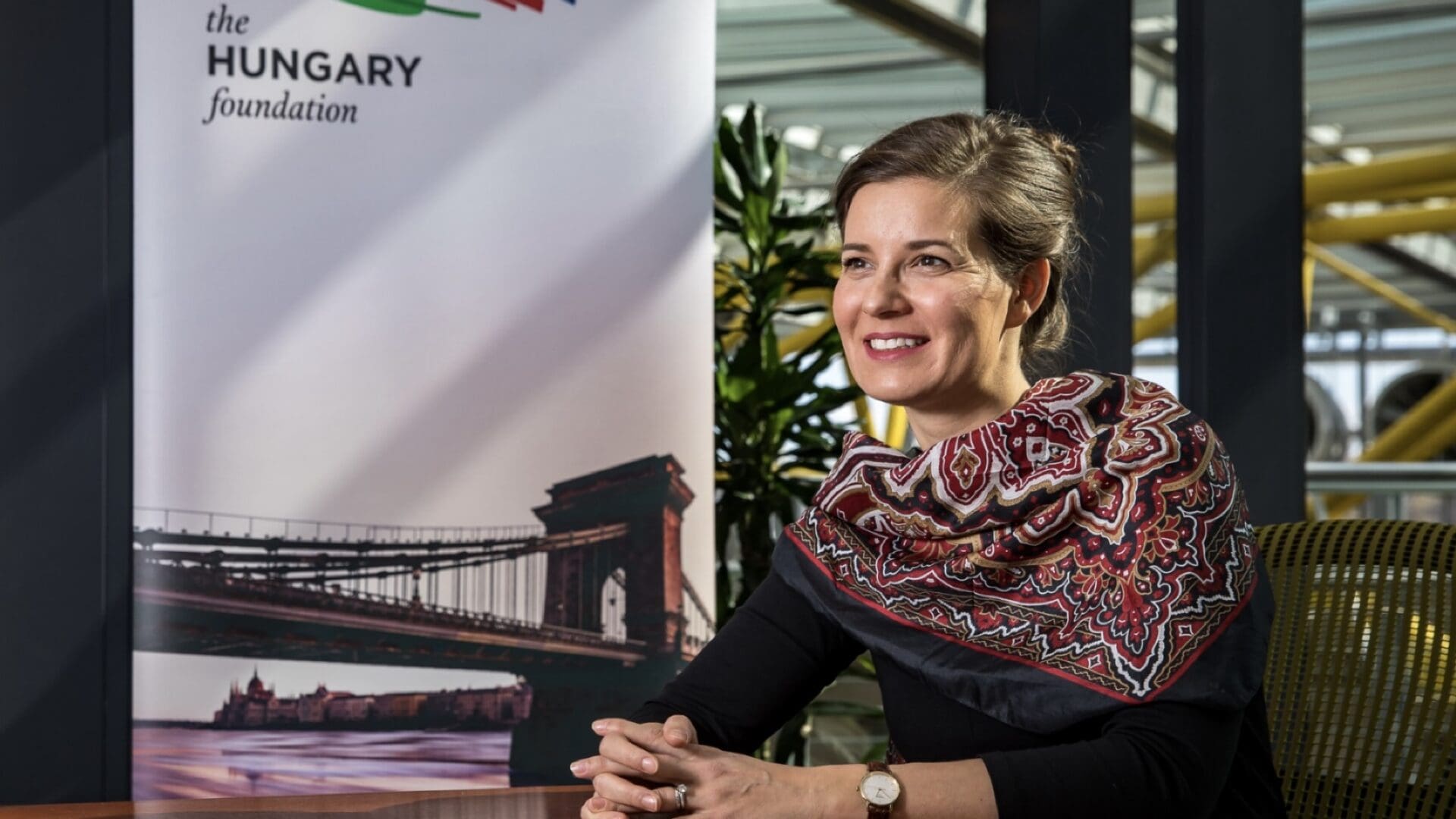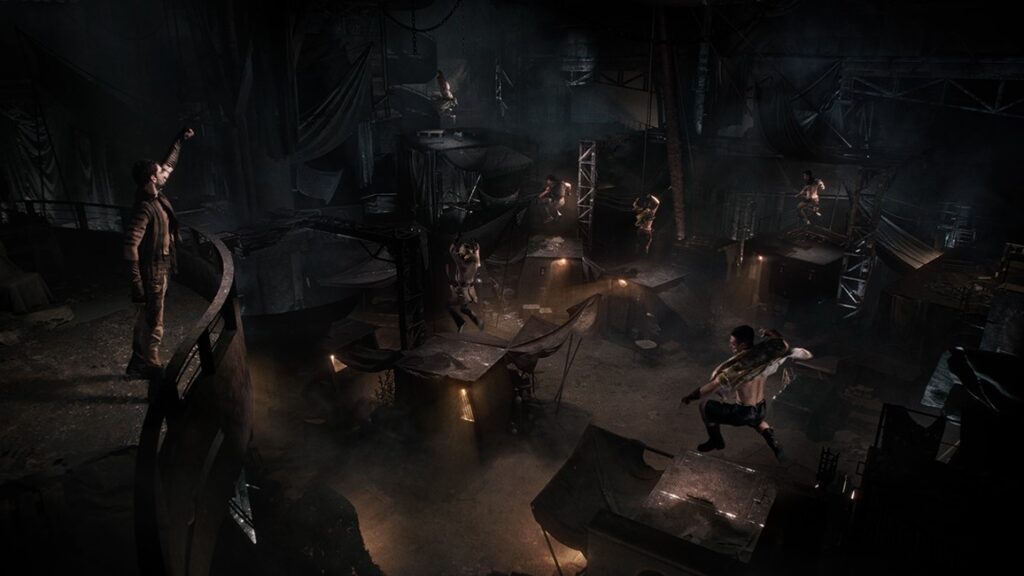This article was first published in Hungarian in Magyar Nemzet.
Hungary Foundation has filled an important gap in civil society relations between the two countries, providing substantial funding for Hungarian–American academic and cultural exchange programs, and contributing to building bilateral civil society relations through a variety of grants. Besides its traditional programs and activities, an innovative component of the Foundation’s portfolio is the HuGo application, which has recently reached its 10,000th download since its inception three years ago. The Foundation’s Executive Director, Anna Smith Lacey sees a lot of potential in connecting the Hungarian past and present in the U.S.
***
Where did the idea of the HuGo app come from and what was its goal when it was launched?
During our research fellowships and sponsored cultural programs, we kept coming across Hungarian footprints in America, but there was no common platform to find everything Hungarian in the U.S. Personally, I’m a visual person, so whenever I was asked about Hungarian presence in the U.S., the traditional historical hotspots came to mind: Ohio, Pennsylvania, New Jersey, New York. But the more I travelled in America, the more I realized that there is no state in the U.S. where Hungarians have not created something lasting; where there is not some Hungarian thread, some Hungarian history, some Hungarian contribution. We wanted to visualize this centuries-old creative process and make it easily accessible to the widest possible audience. That’s how the idea of the HuGo app was born, and of course it took years to fine-tune the concept with our developers arriving at the publicly available version we have today.
‘HuGo’s avatar is the adventure-seeking modern hussar, who visits Hungarian sites in the U.S. and shares those with everyone who follows along’, the Hungary Foundation website says about the app. Why HuGo and why the hussar symbol?
One of the first notable instances of Hungarian–American relations is that related to a hussar, Mihály Fabriczy Kováts, a Hungarian military commander and nobleman who was a Hussar colonel in the American Revolutionary War. Along with Pulaski, he is also known as the ‘father of the American cavalry’. As a historical icon, the hussar is a well-known and respected symbol of Hungarian love of freedom and heroism in America. The name HuGo is a contraction of ‘Hungary (on the) Go’.

Its touristic value is obvious, but how can it serve and strengthen the Hungarian American community and relations?
Previously, getting information about Hungarian community events, where to buy cottage cheese or Hungarian sausages, or where to find a Hungarian-speaking dentist, was only possible from friends or through local Hungarian mailing lists, traditional media or organizations. This database is now displayed in a user-friendly way on a map that anyone can download to their phone. Whether they speak Hungarian or not, and whether they have any contact with local Hungarian communities or organizations or not. HuGo’s strength, we believe, is that it is easily accessible to everybody interested in Hungarian culture. For those who identify themselves as Hungarian through their ancestry, but also for those who have already visited our country, have returned to America with fond memories and would love to eat a sour cherry strudel in Chicago, or go to a Liszt concert, or a folk-dance event (táncház).
HuGo is trying to map Hungarian American sites and Hungarian point of interest of the nearly 250 years from the proclamation of American independence to the present day. How does it work and how reliable is it? Is there any verification mechanism in place?
The app relies first and foremost on the power of the community.
The users themselves upload the content (i.e. the places, events, shop locations, services, etc.), and it is the users who can also comment and report if an upload is incorrect. Points are earned for uploads, so competitive users can keep track of how many of all uploads they ‘own’ per state and in how many states they have placed points on the map. Of course, everything can be checked in the admin interface, and duplicates are checked and eliminated regularly, and any errors or mistakes are filtered out, but it’s basically a bottom-up system. That was the goal from the beginning. Otherwise, how would we, in Washington D.C., know that there is something Hungarian in the sparsely populated western tip of Texas or in the middle of Oklahoma?
How many users does HuGo have and how many Hungarian-related points are on its map currently?
We reached the 10,000th download a few weeks ago. That’s the number of people who use the app in browser mode. We have around 3,200 registered users, who have actively contributed as uploaders to the content on HuGo. So, in two years we have built a ‘knowledge community’ of thousands of individuals, which is a fantastic and exciting new dimension in the Hungarian American scene. There are now more than 1,700 Hungarian-related points on the map, mixed in seven categories (food/drink, event, historical, official, community, services, other), in almost every U.S. state. We strongly recommend downloading and using it to anyone living in or heading to America who is interested in Hungarian matters. It is used by our Hungarian scholars, our former U.S. scholars, U.S. diplomats in training; so Americans, Hungarians and Hungarian Americans, whether integrated in diaspora organizations or not integrated at all—this diverse user base is one of HuGo’s strengths.
What are the most and least popular categories?
The most popular one is the history category, with 431 uploads, obviously, because it covers a lot of matters: from stained glass windows created by Hungarians to memorial plaques and totem statues to simple street names. The fewest, 39 points, are in the official section, where we mark consulates and embassy buildings—their number does not change much.
Which are the most common and which are the most unusual uploads?
The most common uploads are events and camps, with new content being added on a weekly basis, as organizers are beginning to realize that as soon as an event is posted on the app, thousands of users will be notified immediately. No diaspora organization has such access, so HuGo is an excellent audience-building tool. Many Hungarian entrepreneurs in the United States are also starting to use the app, so we get food trucks, Hungarian-speaking accountants, doctors, lawyers, and similar uploads. We are surprised to see places that very few people know about, such as a narrow ‘Hungarian Pass’ in Oregon named after a Hungarian mountaineer (otherwise there is minimal Hungarian presence in Oregon). My personal favorite is the medieval Nekcsei Bible, a priceless monument of Anjou-era Hungarian book art, now in the Bible collection of the Library of Congress in Washington, D.C. which is a true Hungarian curiosity. My other favorite is the Árpádhon in Louisiana, home to the largest rural Hungarian American historical community. While Hungarian communities were typically concentrated in northern, northeastern towns, this is a Hungarian settlement built around a nineteenth-century southern strawberry farm, a true place of wonder.
Have you received any feedback from uploaders or users over the three years?
HuGo was less than two years old when it won a special prize from the Hungarian Marketing Association. The unexpected recognition was positive feedback after years of hard work as a developer. Users keep telling us how easy it is with HuGo where the previously sporadic or difficult-to-access information is finally being collected. Technical feedback is constantly being passed on to our developers and we are polishing the user experience monthly. We have learned a lot in the process. Perhaps the biggest recognition is that other diaspora communities have approached us: Spaniards, Canadians, Australians contemplating doing something similar.
What are your plans for further development?
We would like HuGo to reach as many people as possible, and to make as many undiscovered Hungarian-related places and programs visible as possible. We have already launched a HuGo guided tour in New York on an experimental basis; we would like to develop this for Washington D.C., Chicago, Los Angeles (Hollywood) and other major cities. We see a lot of potential in connecting the Hungarian American past and present.
Related articles:








